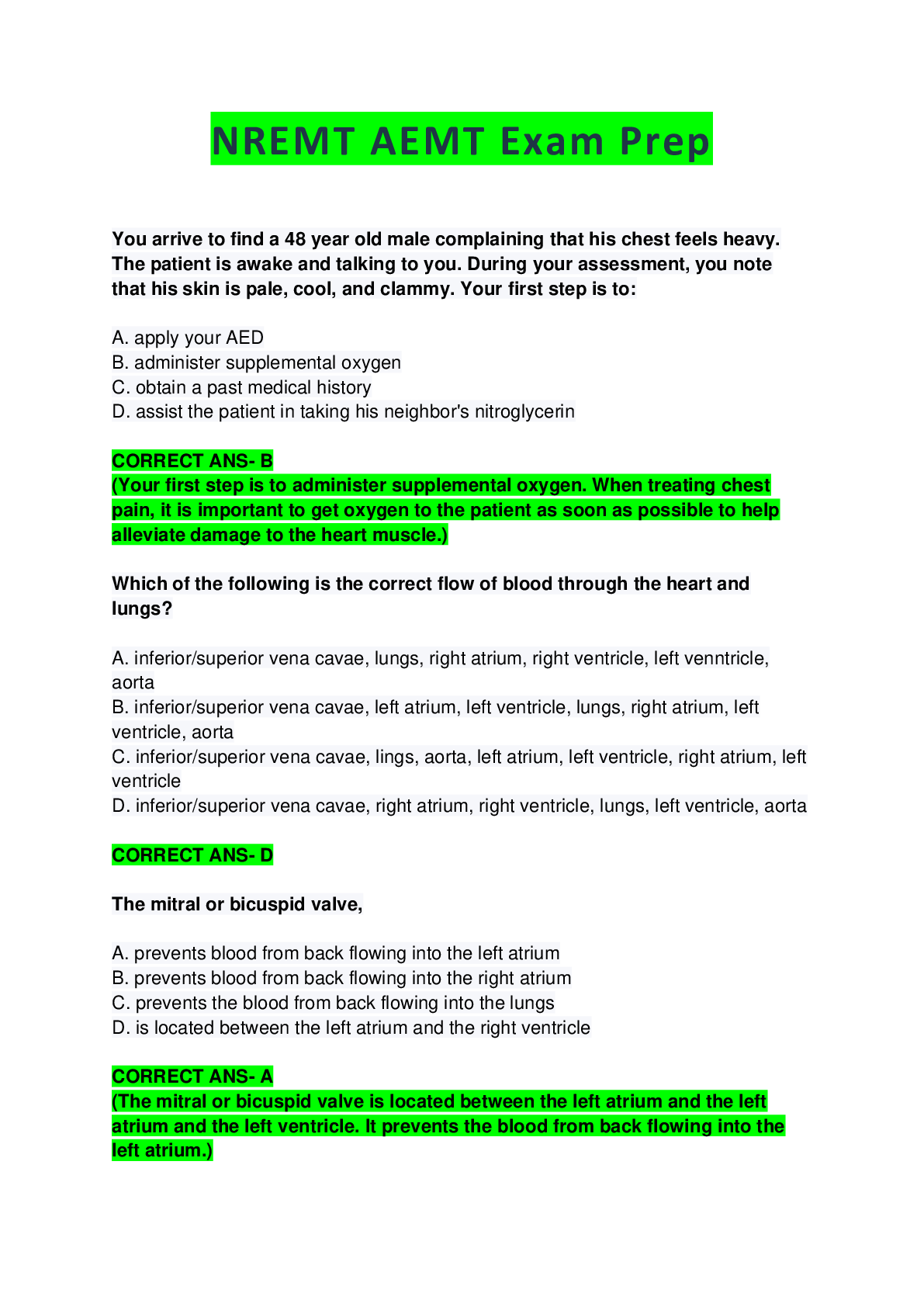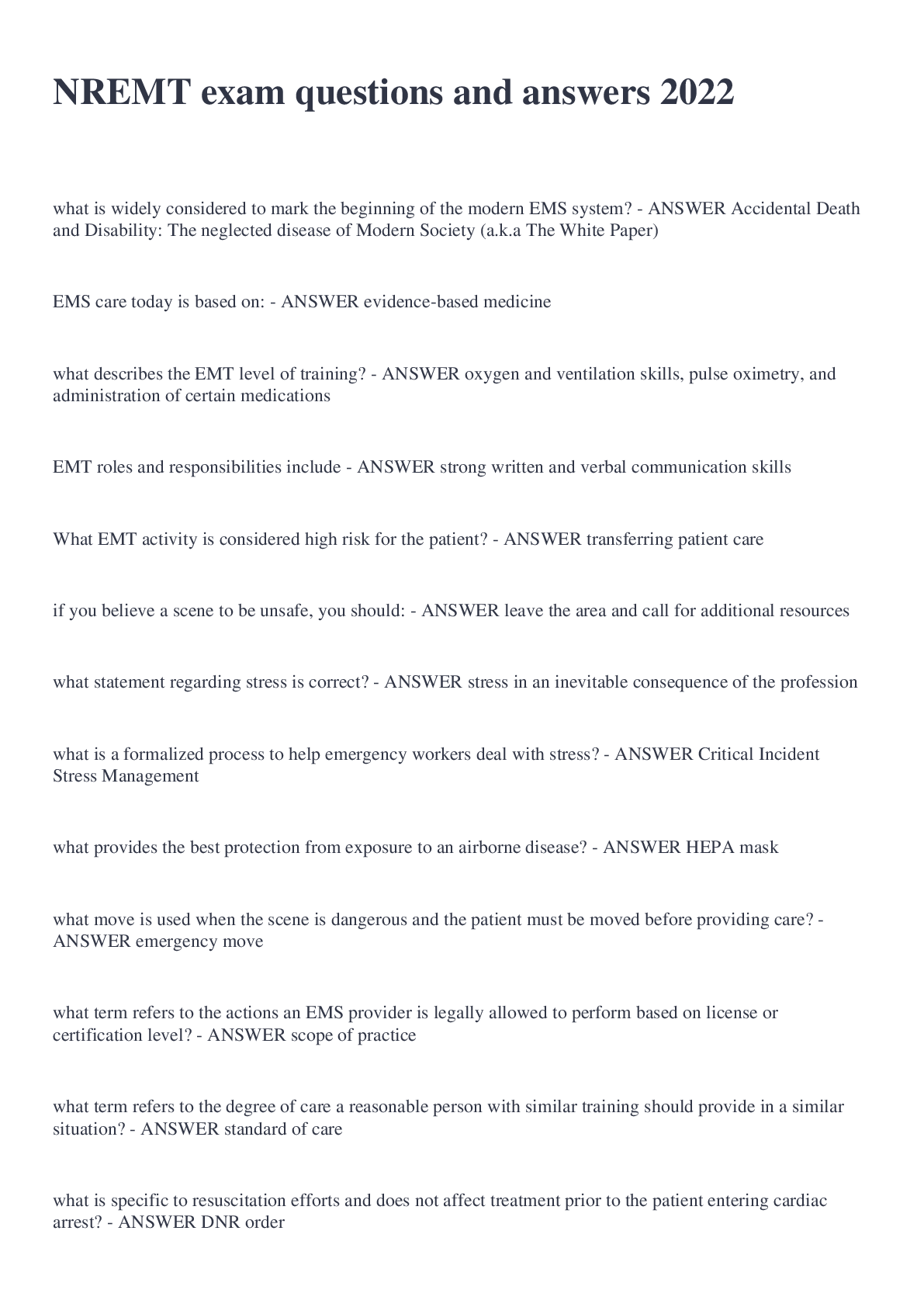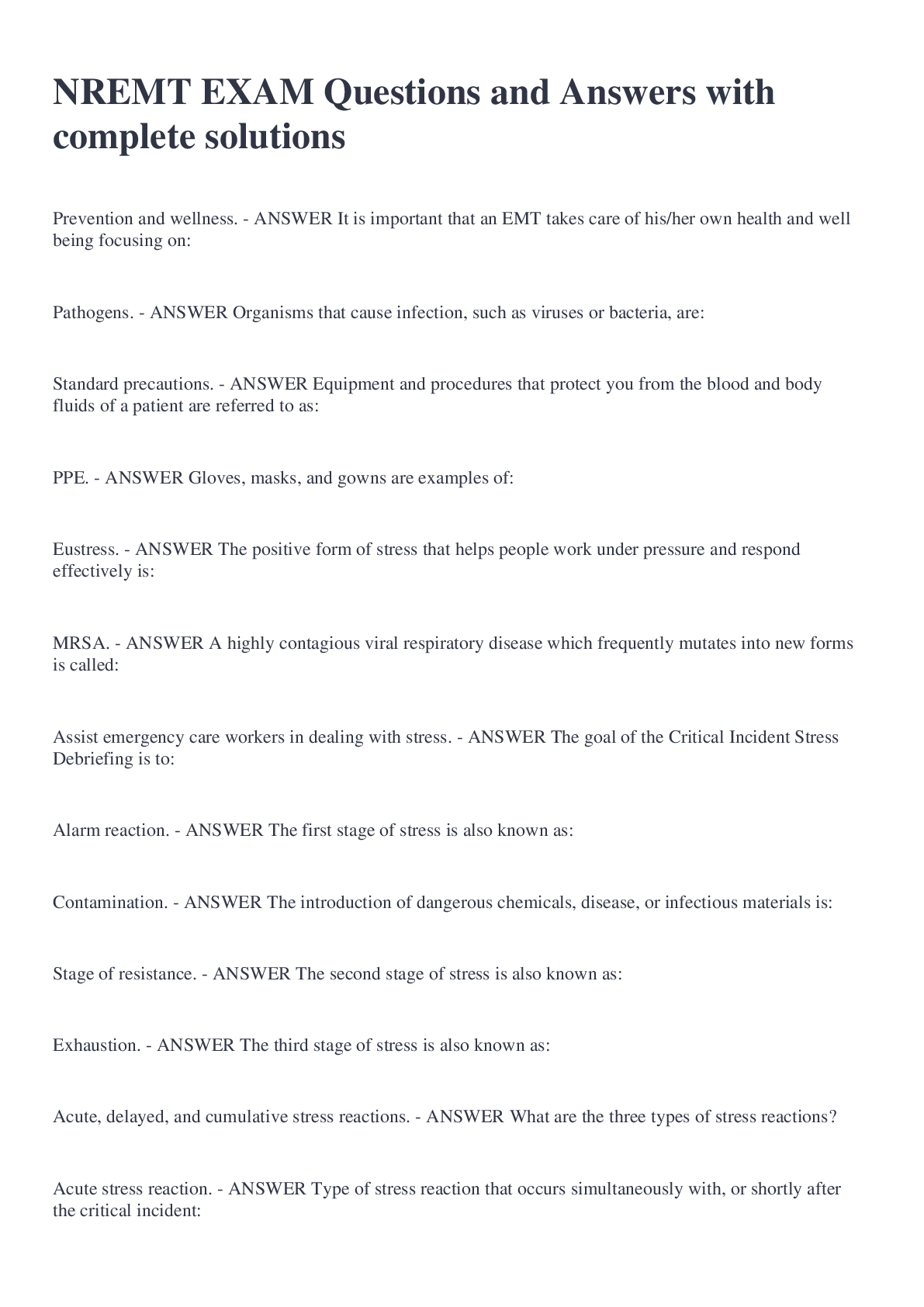Medical Studies > EXAM > NREMT® EMR Exam Prep / NREMT Exam Questions and Answers/Explained 2022. (All)
NREMT® EMR Exam Prep / NREMT Exam Questions and Answers/Explained 2022.
Document Content and Description Below
NREMT Exam Questions and Answers/Explained 2022. You arrive to find a 48 year old male complaining that his chest feels heavy. The patient is awake and talking to you. During your assessment, you note... that his skin is pale, cool, and clammy. Your first step is to: A. apply your AED B. administer supplemental oxygen C. obtain a past medical history D. assist the patient in taking his neighbor's nitroglycerin Which of the following is the correct flow of blood through the heart and lungs? A. inferior/superior vena cavae, lungs, right atrium, right ventricle, left venntricle, aorta B. inferior/superior vena cavae, left atrium, left ventricle, lungs, right atrium, left ventricle, aorta C. inferior/superior vena cavae, lings, aorta, left atrium, left ventricle, right atrium, left ventricle D. inferior/superior vena cavae, right atrium, right ventricle, lungs, left ventricle, aorta The mitral or bicuspid valve, A. prevents blood from back flowing into the left atrium B. prevents blood from back flowing into the right atrium C. prevents the blood from back flowing into the lungs D. is located between the left atrium and the right ventricle Which of the following is NOT true of the treatment of an impaled object? A. remove if blocking the airway B. stabilize in place C. remove to accommodate transport of the patient D. control the bleeding The electrical impulse generated in the right atrium is called the: A. atrioventricular node B. purkinje fibers C. sinoatriual node D. bundle of his You are treating a patient that has been involved in a motor vehicle accident. You can lift a flap of skin on the patient's head. This type of injury would e referred to as a(n): A. avulsion B. laceration C. evisceration D. puncture (A puncture is created by an object that is typically sharp and pointed. A laceration is defined as a jagged cut. An evisceration is typically referred to as organs protruding.) Ligaments connect: A. muscle to bone B. bones to tendon C. bone to bone D. muscle to tendons Which of the following heat emergencies is considered a true emergency? A. heat cramps B. heat exhaustion C. heat infarction D. heat stroke You are treating a patient who has overdosed on a narcotic. The greatest risk for this patient is: A. respiratory depression B. seizures C. hypertension D. hyperactivity Which of the following is NOT an imminent sign that birthing is going to occur? A. crowning has occurred B. contractions are 5 minutes apart C. the patient feels the infant's head moving down her birth canal D. the patient's abdomen is very hard Which of the following patient characteristics does NOT represent a potential for violence? A. quick irregular movements B. threatening posture C. large, muscular individual D. loud, thunderous voice There are hollow and solid organs in the abdomen. The gallbladder is considered a hollow organ. A ruptured hollow organ such as the gallbladder is most commonly associated with: A. severe bleeding B. inflammation and infection C. gall stones D. appendicitis A 29 year old male has taken LSD. The patient appears very anxious and in a panic state. He is showing signs of paranoia. You should: A. agree withe everything the patient says B. restrain the patient C. be aggressive and talk very straight and stern to the patient D. talk the patient down by reassuring the patient The most serious side effect of alcohol consumption is: A. liver damage B. hepatitis C. death D. loss of consciousness You arrive on the scene of an incident where a 16 year old male fell approximately 12 feet. That would be considered: A. a trauma alert B. a significant mechanism of injury C. not a significant mechanism of injury D. a case with a load 'n' go patient When assessing a 35 year old patient complaining she is short of breath, you note that her breathing is in excess of 28 times per minute. This is considered: A. neuropnea B. apnea C. bradypnea D. tachypnea You arrive on the scene of a patient who fell from a ladder. You should open the patient's airway by using: A. head-tilt/chin-lift B. jaw thrust maneuver C. neck-lift/head-tilt D. head-tilt/jaw-thrust You arrive on the scene, finding an unconscious patient. There are no other individuals in the vicinity to give any other information or permission to treat the patient. Even though the patient cannot give you consent to treat him, you begin to do so because of [Show More]
Last updated: 1 year ago
Preview 1 out of 24 pages
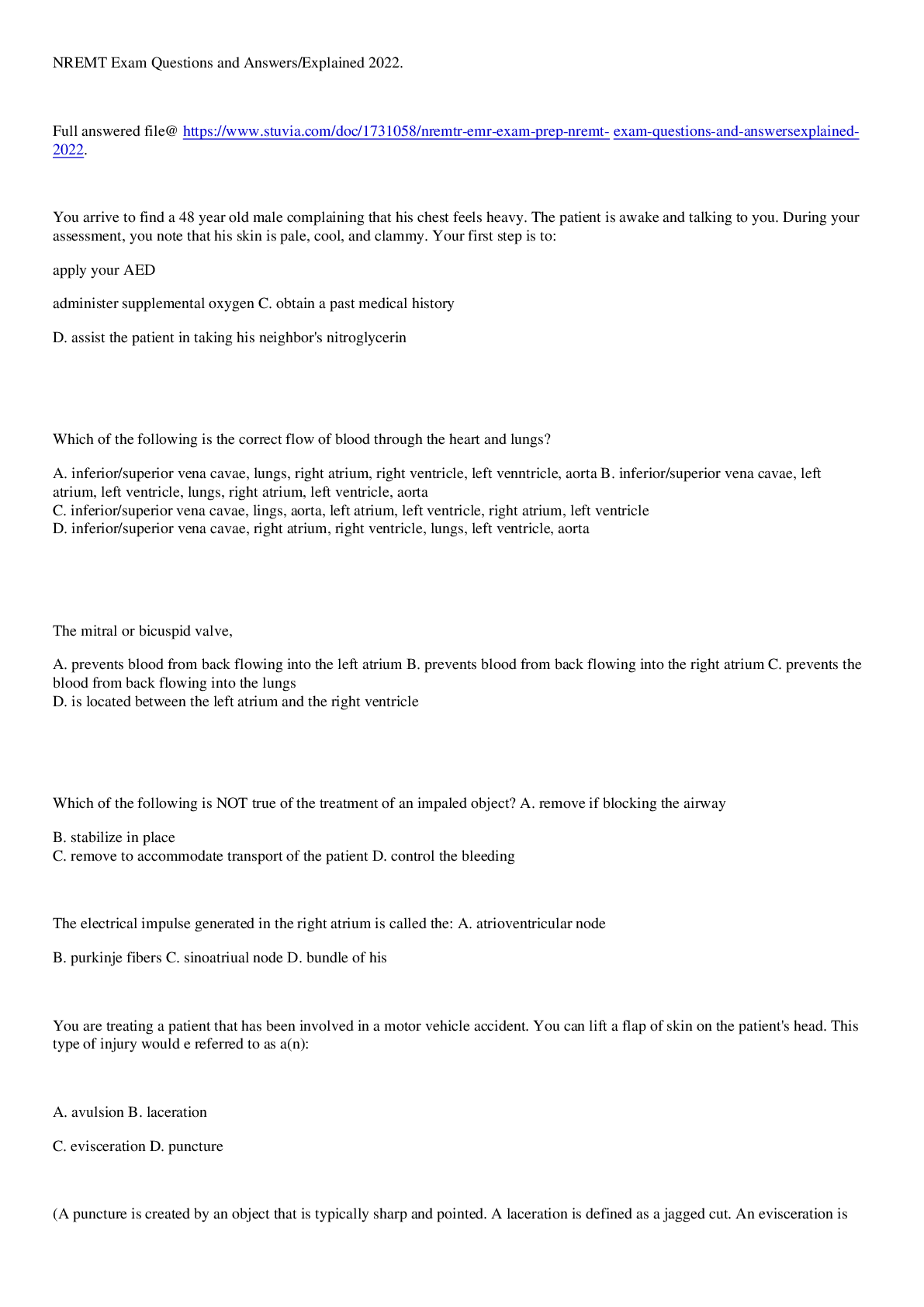
Reviews( 0 )
Document information
Connected school, study & course
About the document
Uploaded On
Apr 13, 2023
Number of pages
24
Written in
Additional information
This document has been written for:
Uploaded
Apr 13, 2023
Downloads
0
Views
23


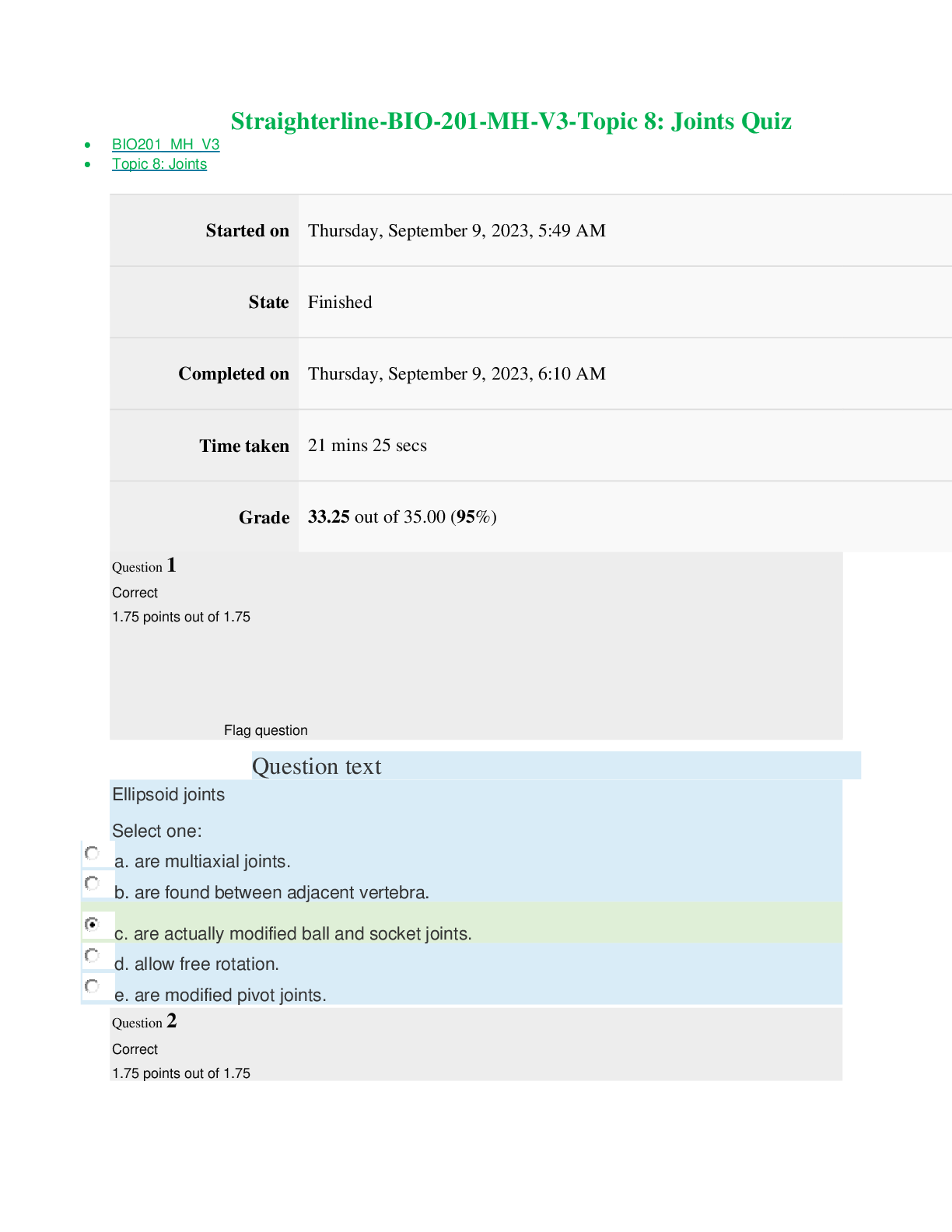
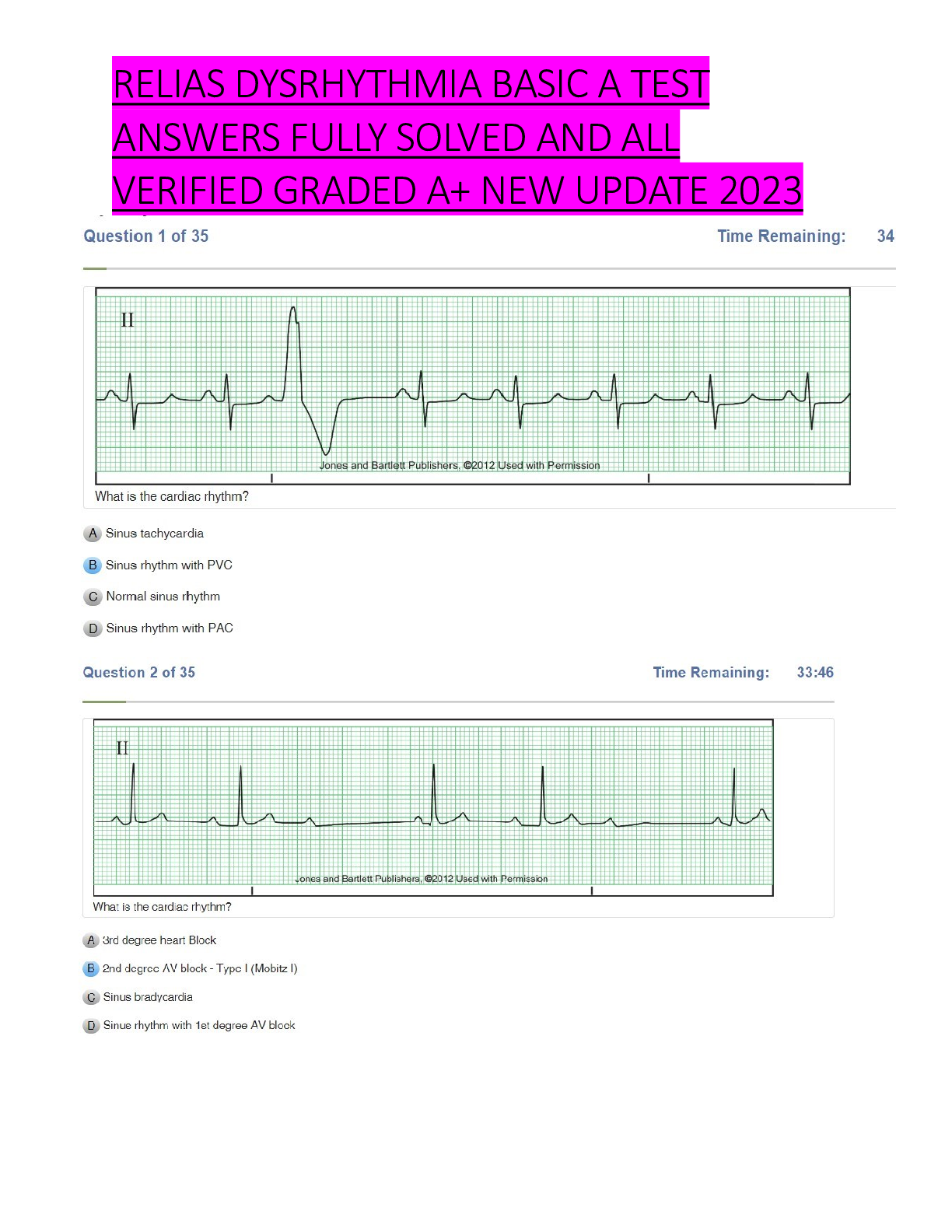
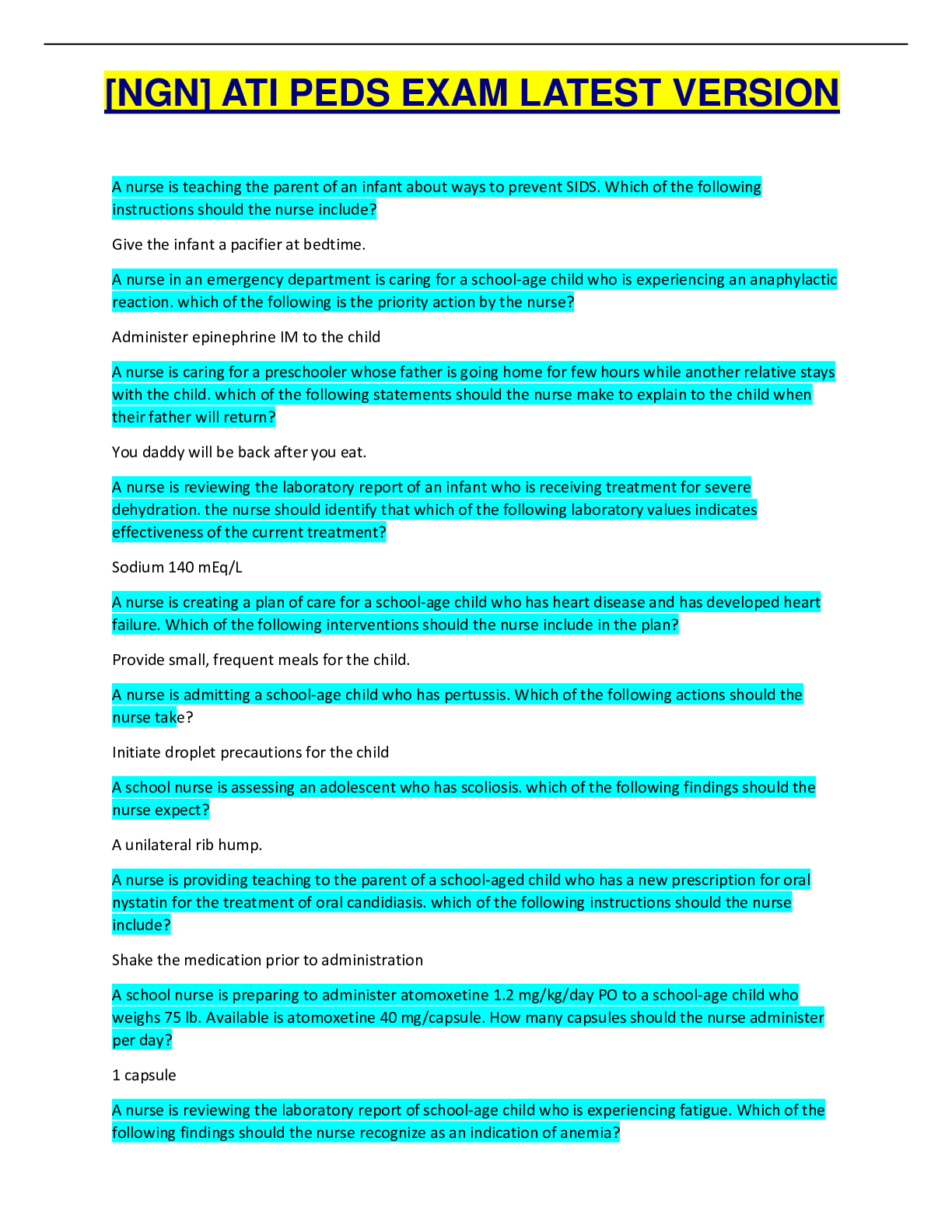


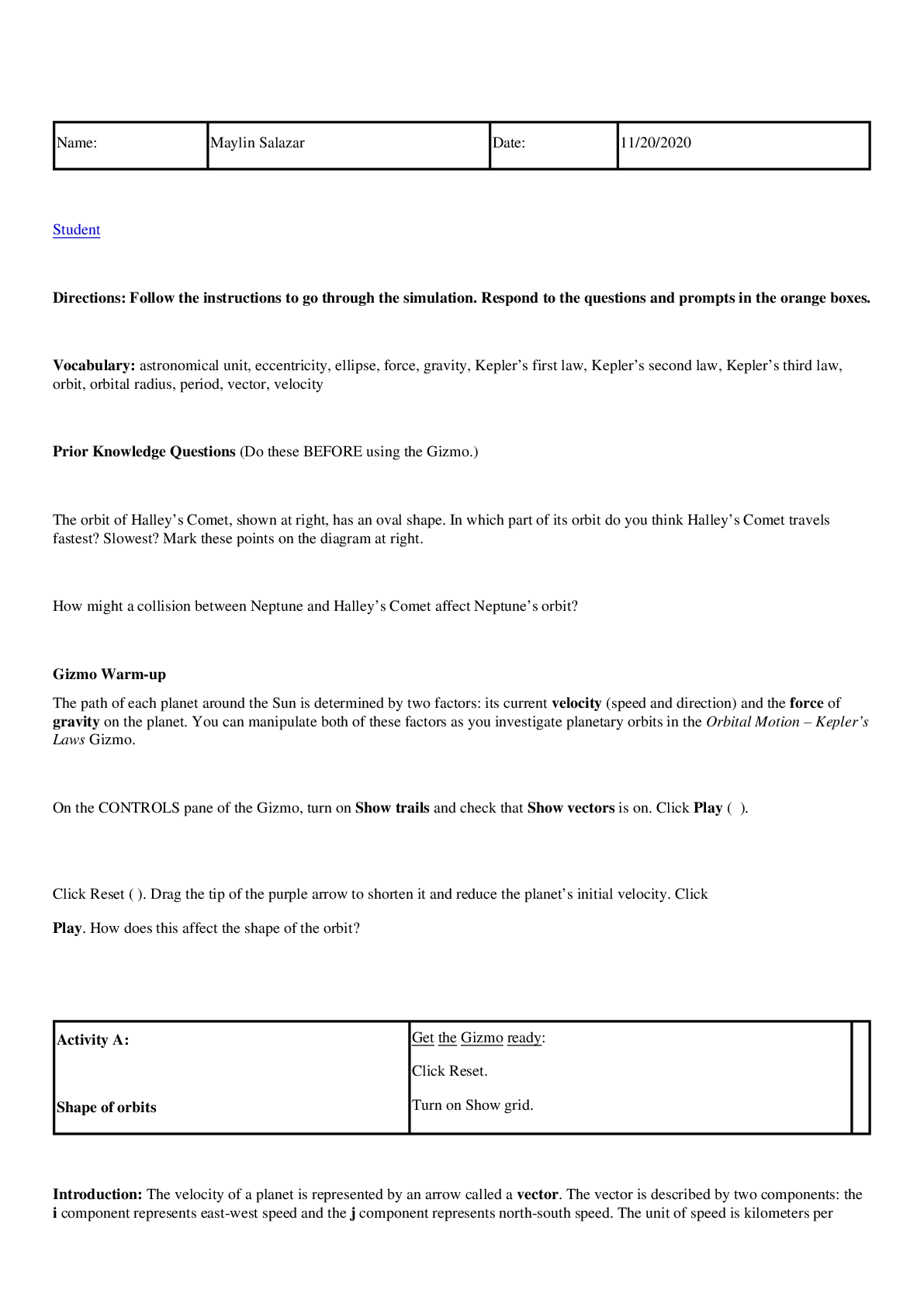



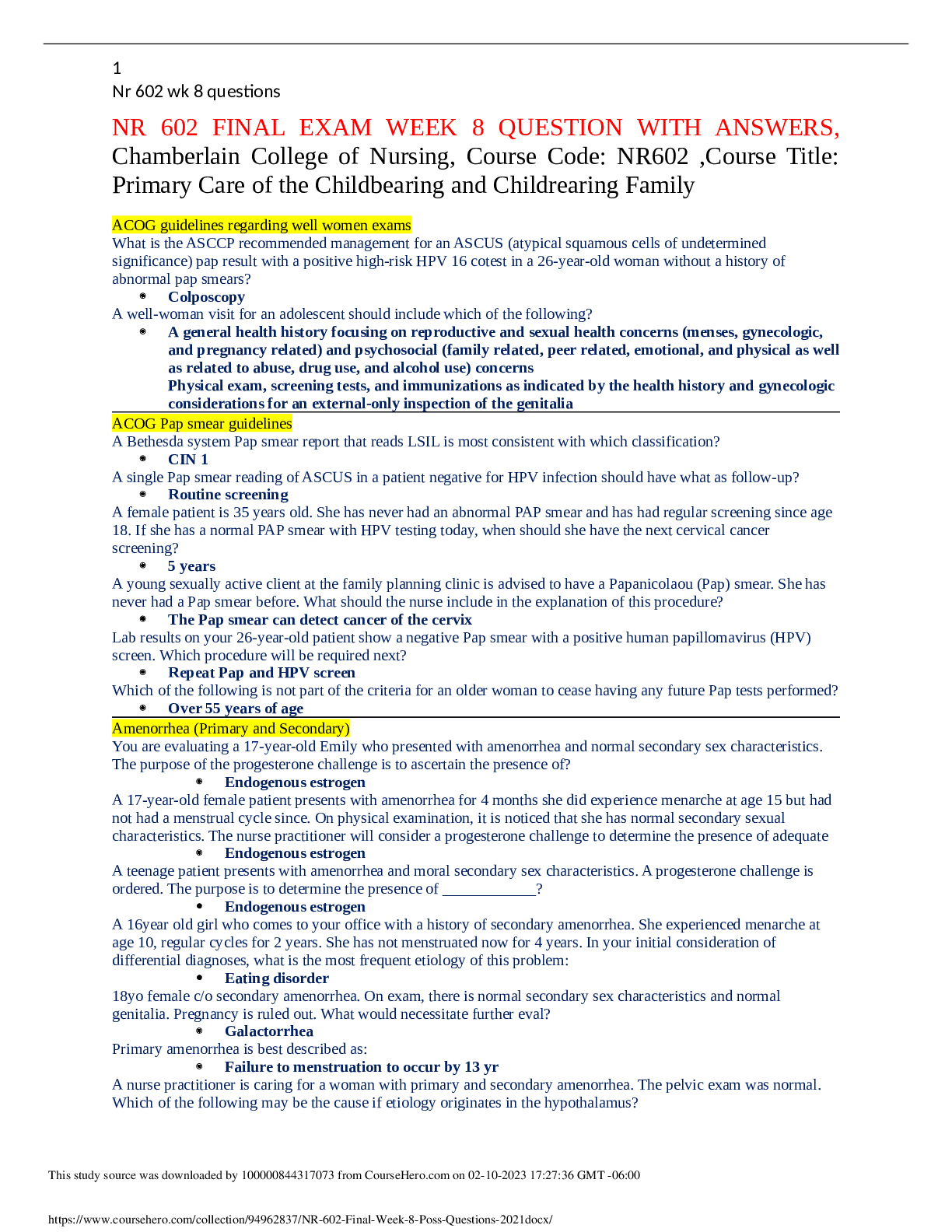




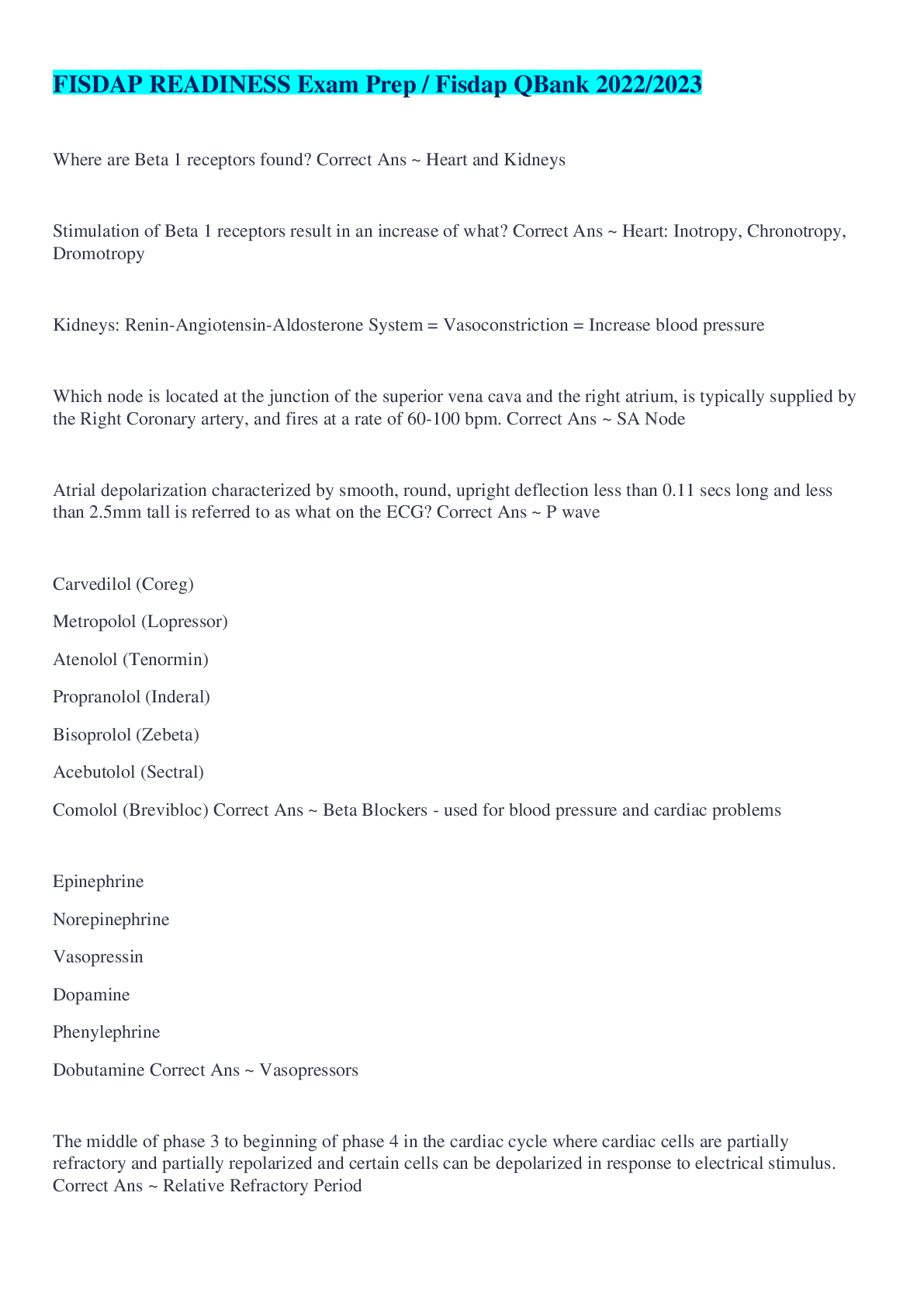

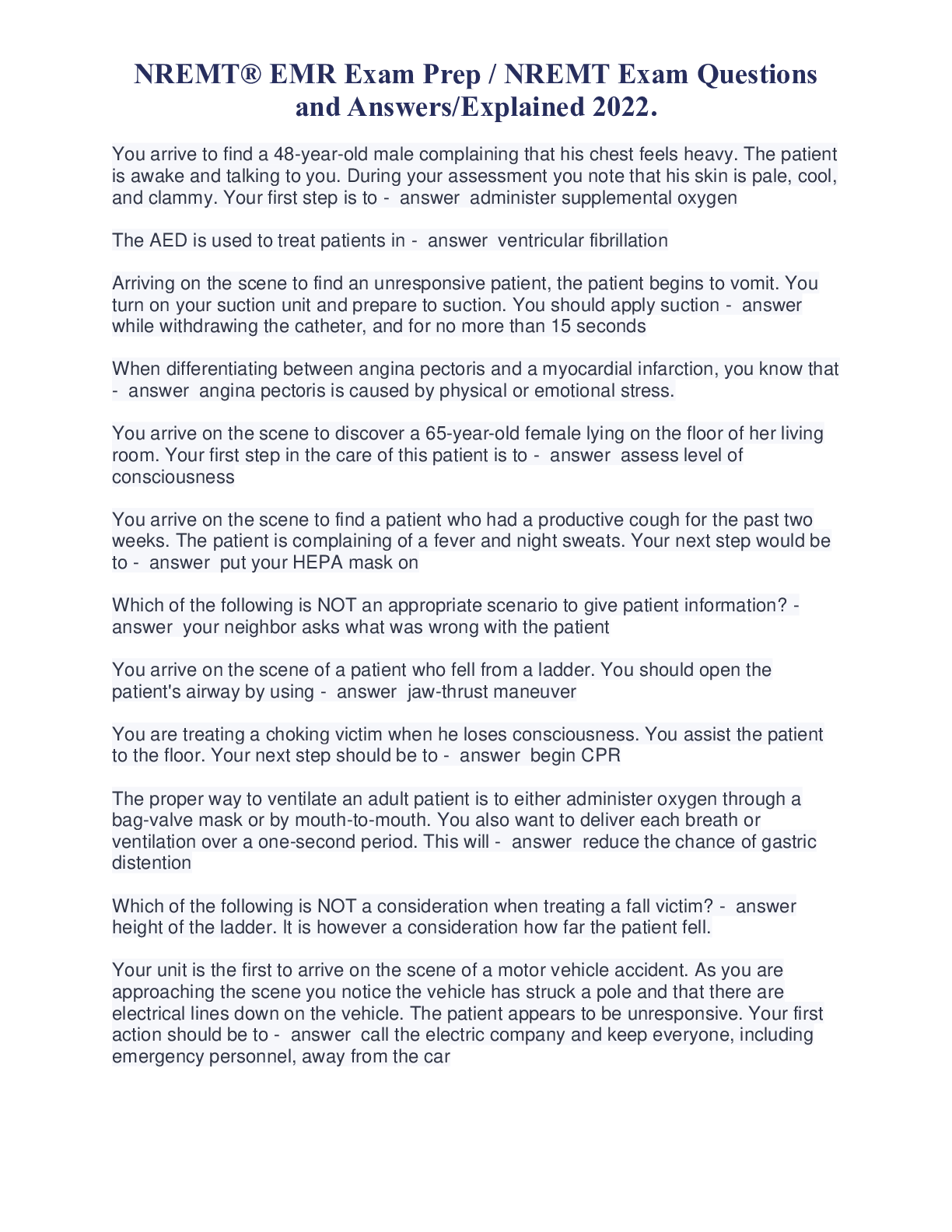
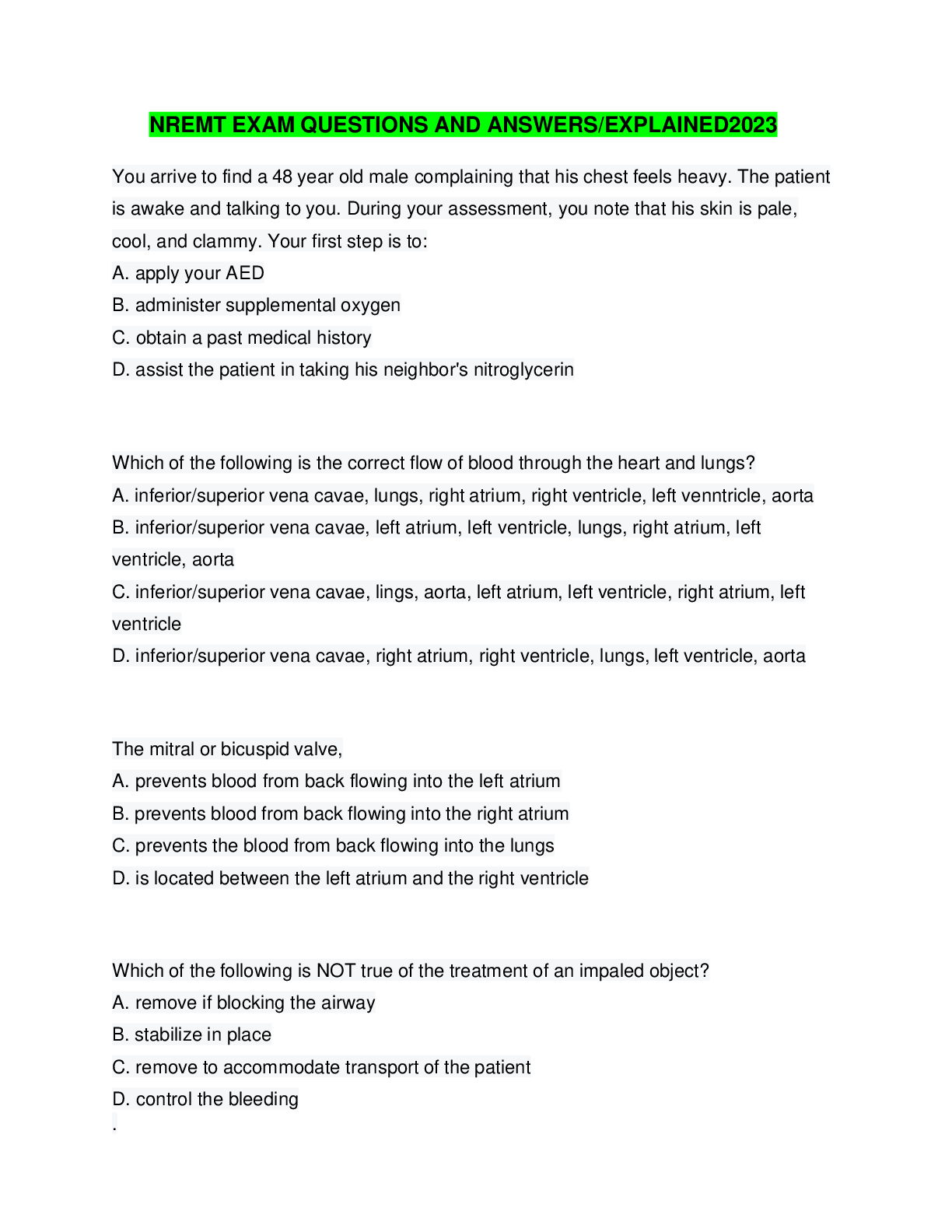
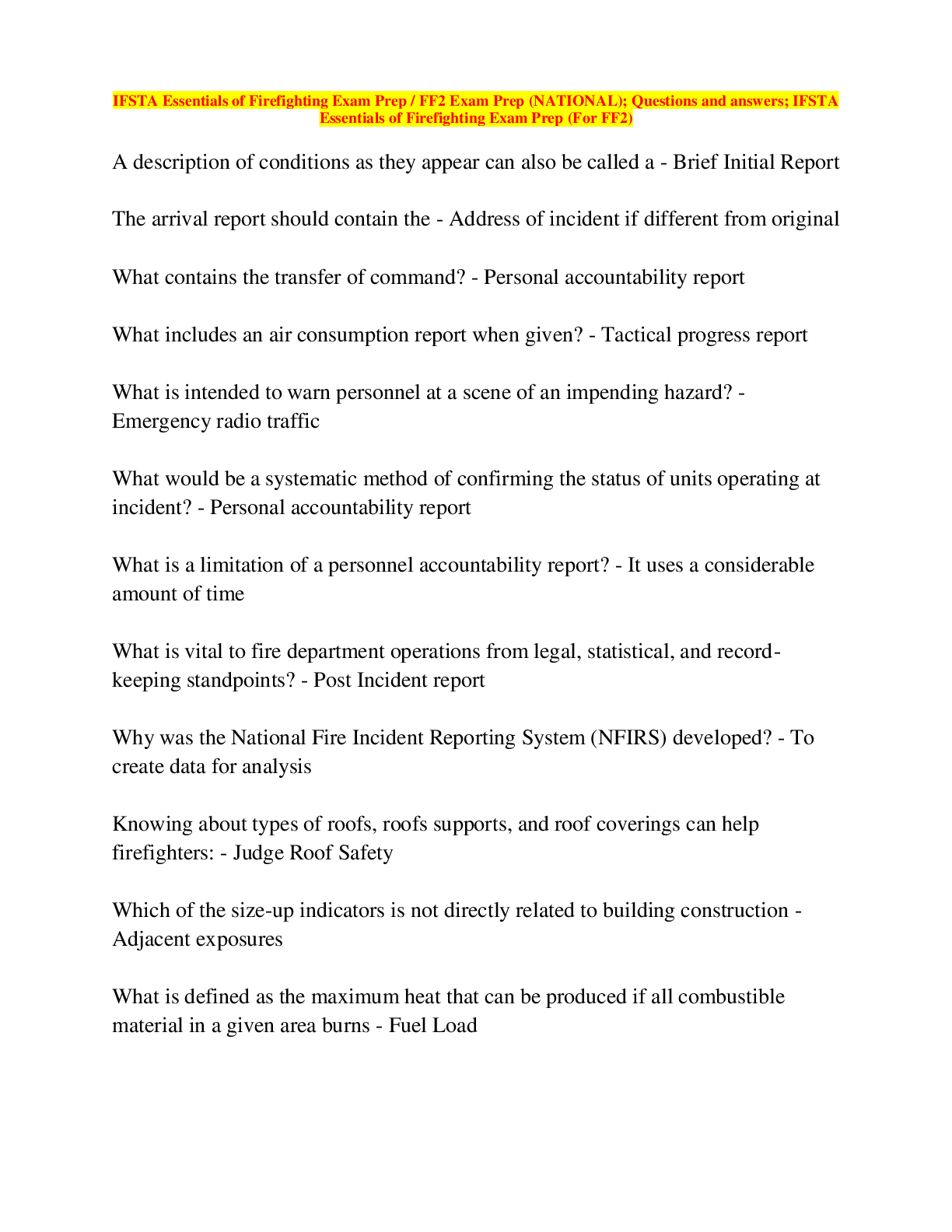
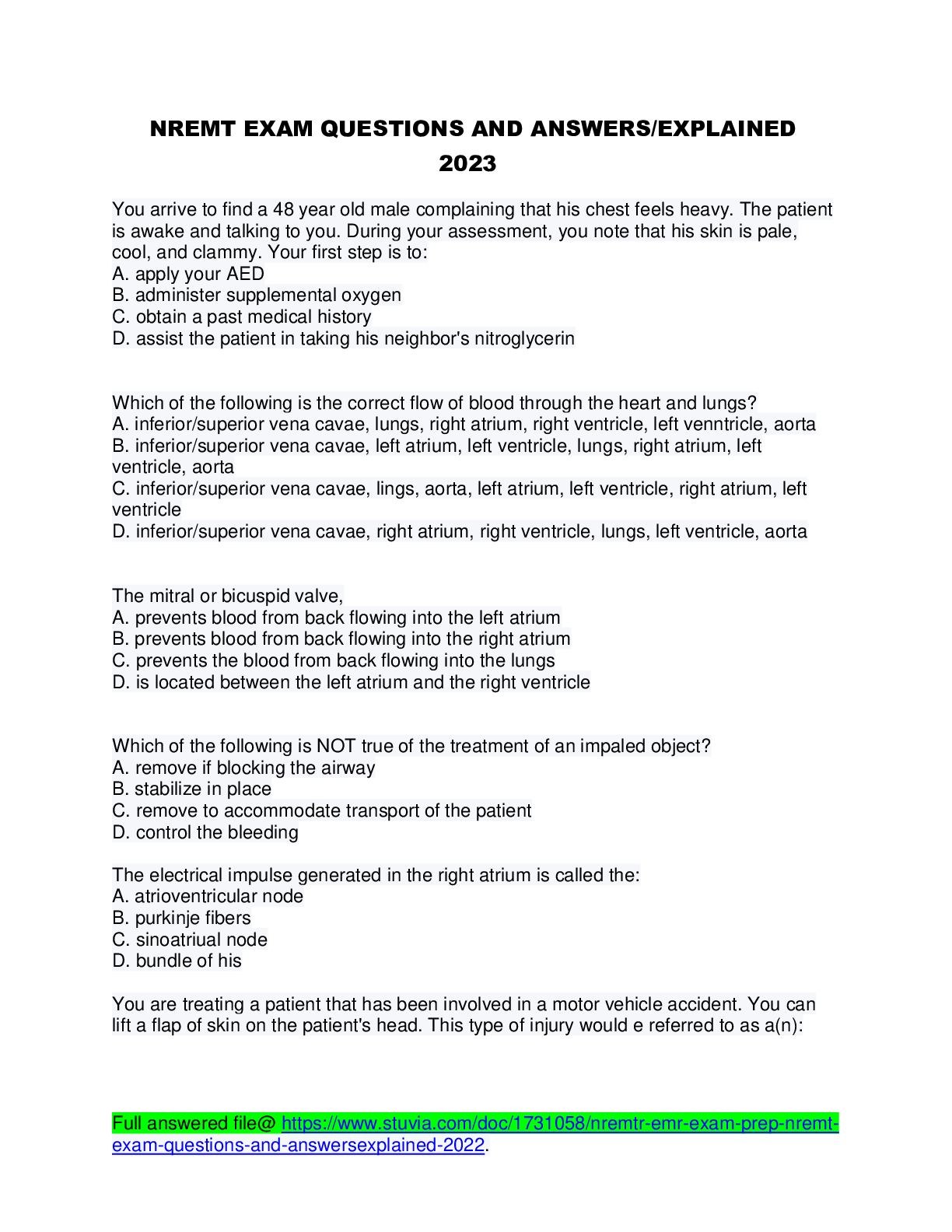
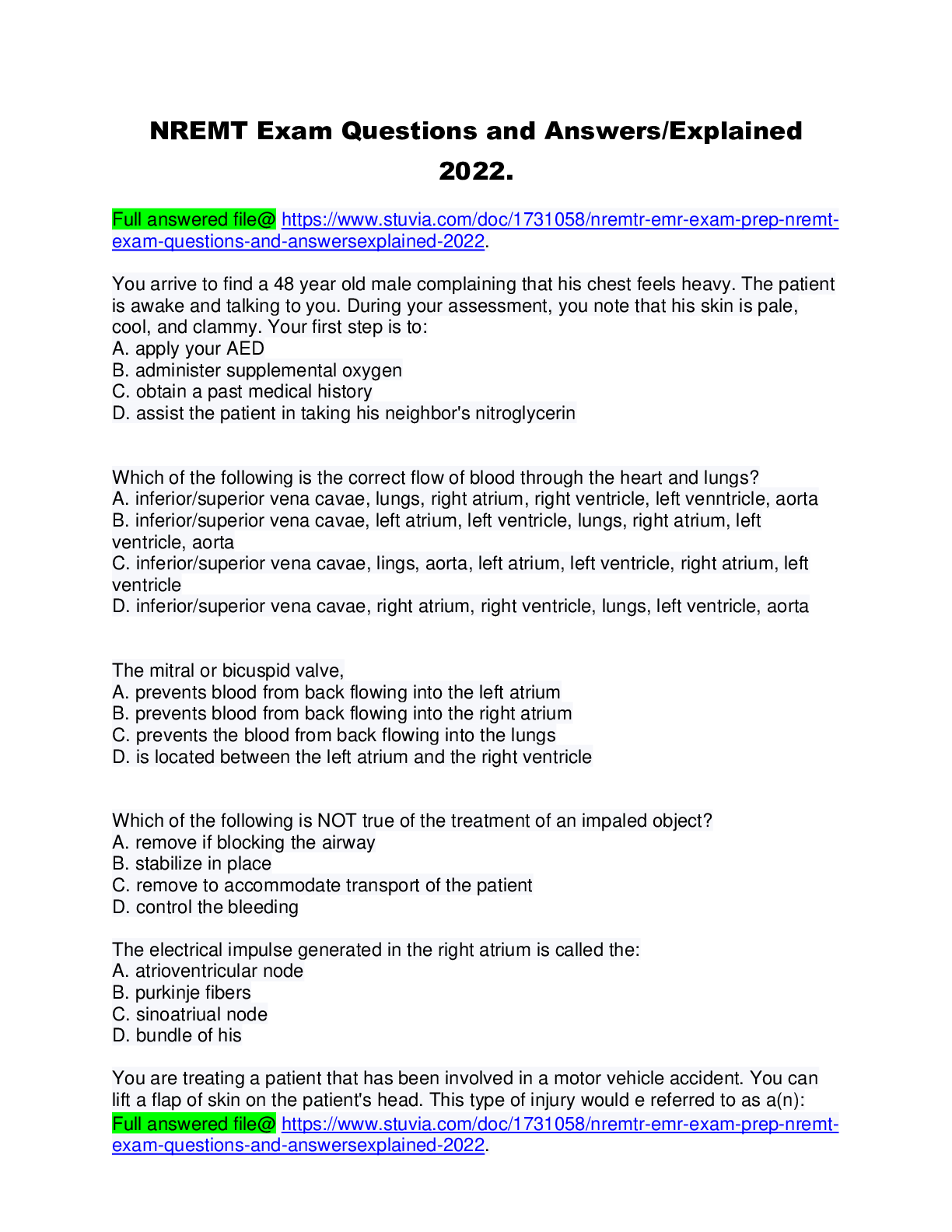
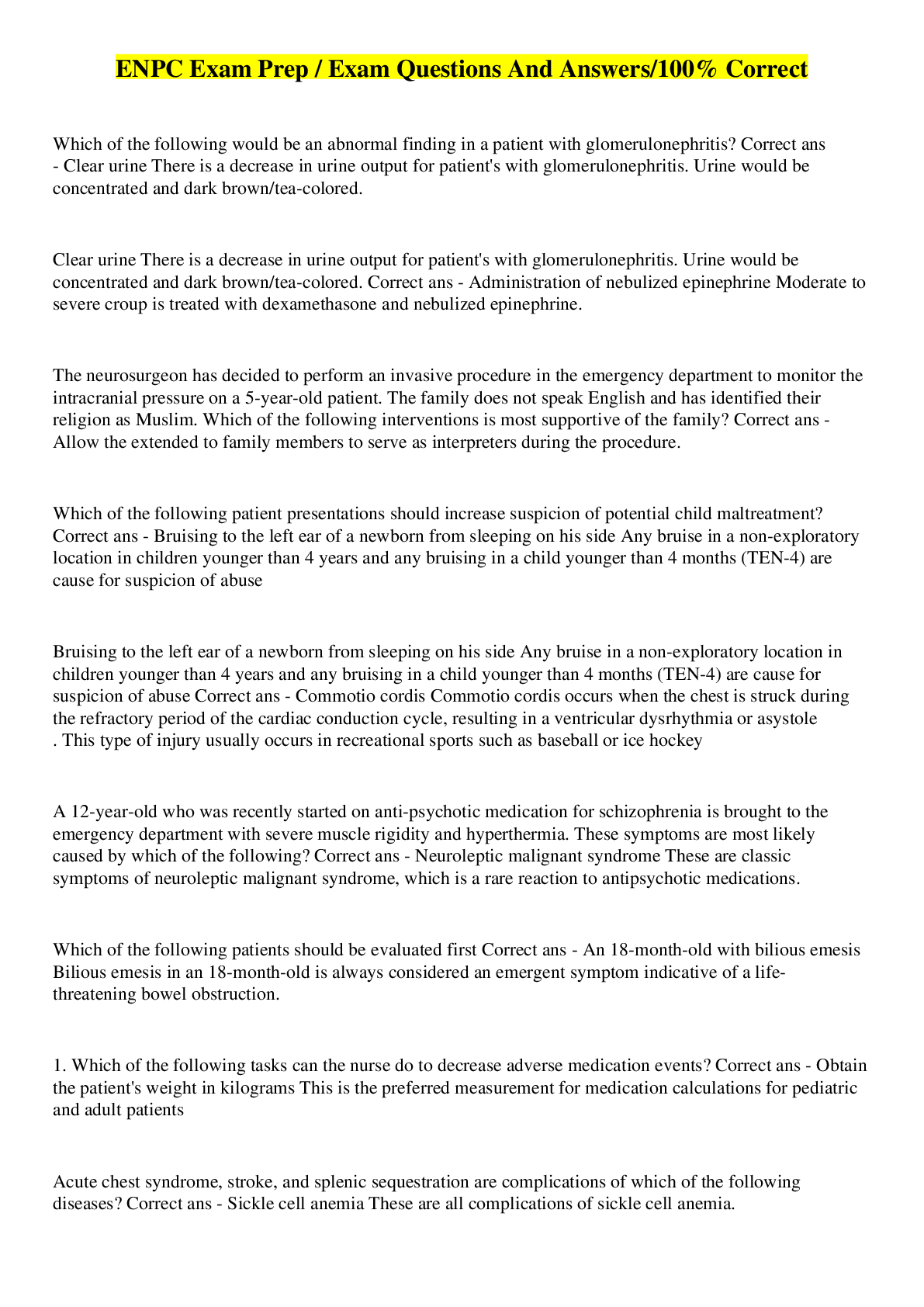
.png)

